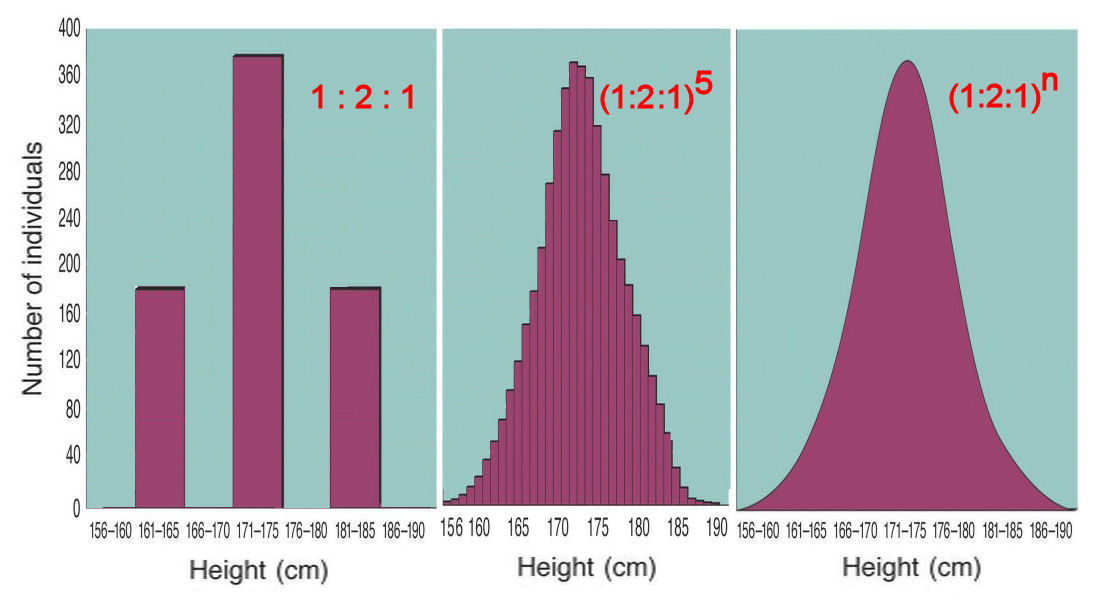
Single- versus Multi-locus genetic trait distributions
[Left]
A quantitative trait determined by a single locus with two
alternative alleles (A
and B) occurs in
three (31) genotypic classes
(AA, AB, and BB), which correspond to
three distinct phenotypes, if A is co-dominant with B. [Middle] As the number
of contributing loci increases, e.g., from five loci (A1  A5) with 35 = 243
possible phenotype classes, or [Right] n loci
with 3n classes, the character distribution
becomes essentially continuous, and follows the normal distribution.
A5) with 35 = 243
possible phenotype classes, or [Right] n loci
with 3n classes, the character distribution
becomes essentially continuous, and follows the normal distribution.
A multi-locus genetic model will satisfy the requirements for a normal distribution, if there are (1) many factors that (2) contribute independently to the feature, with (3) equal effect.
A multi-locus genetic model will satisfy the requirements for a normal distribution, if there are (1) many factors that (2) contribute independently to the feature, with (3) equal effect.